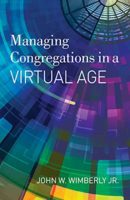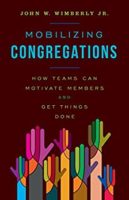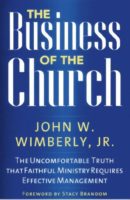
Wherever I go in my consulting work I ask, “How do you keep track of membership and financial data?” More times than not the answer is, “We use (whatever software vendor) but it doesn’t really work all that well for us.” Since managing financial and membership data effectively is crucial, how can we avoid this all-too-common problem in the lives of congregations?
The first decision software buyers must confront is whether to buy an integrated system or several component parts—for example, an accounting package for finances and a contact management system for membership data.
One package or many?
Integrated software systems typically promise users they will gain control of all their membership data (when people join, birthdays, how much they pledge, detailing pastoral care concerns, etc.), cross-linking information in helpful ways. Some popular church software systems are listed on this website. Integrated systems combine a membership database with a financial records component that—in theory—makes it easier to manage financial data such as pledges, open plate, and other forms of income, tracks expenses, and creates financial reports (Income & Expense Report, Cash Flow Report, Balance Sheet, etc.) in formats one can customize. Integrated church software companies usually promise lots of helpful training at startup and continuing help as the software is used by church staff. Generally, there is a monthly fee for the support.
The advantage of using component parts—especially widely-used ones like QuickBooks for accounting or Salesforce for contact management—is that you can draw on a large pool of volunteers who have already learned these packages at work. The disadvantage is that widely-used software packages are designed for business rather than for congregations and need to be customized to fit your needs and culture. Getting separate programs to share data can be another challenge.
I have a few thoughts congregations should consider as they consider options regarding membership and financial data management.
Define the Need
What do you really need? I remember learning Excel while in an MBA program. One of my teammates who knew Excel very well said, “This program can do far more than any one person will need. Different people need Excel for this; others for that. But I have never known anyone who needed all the program offers.” He was right. I learned what I needed to know and added a bit more over the years as required by new types of workloads. Like Excel, integrated congregational software packages contain far more features than any congregation needs to use. Are we over-buying, paying for options we don’t need, when purchasing complicated integrated church software systems?
What data do we need?
Before considering software options, a congregation should ask, “What membership and financial data do we really need?” This question is not new. Long before we had software, congregations conducted surveys of their members’ talents. The results were tabulated manually and put into a document. But how often was the data used? In my experience, both as a pastor and consultant, they are used very rarely. As a result, members complain, “I took the time to fill out a talent survey and then was never asked to do any of the things I indicated interest in.”
Being honest about the data you truly need simplifies decisions about software. Do we need to know people’s interests, if we’re not going to tap into that database regularly? Do we need a file for members’ pastoral-care history if staff won’t take notes on each encounter or do not consult the file before each visit? Will our staff and lay leaders use the system to create a calendar of events and keep it up to date? The list goes on.
What data do we need? This question applies to finances also. Is the software nimble enough to create customized reports? Is it user-friendly? Can staff members see financial data related to their ministry areas from their desks at home as well as at work?
If you choose an integrated package, you will want to be sure that the financial and membership components interact as advertised. I recently worked with a denominational office where they did not, which created enormous frustration for the staff.
When purchasing software, consider using www.techsoup.org, where 501c3 organizations can get a significant discount on many types of software.
Consider the Users
In addition to understanding what data we need (and what we will actually use!), it is important to consider who we can hire or train to input and manage data. If a congregation uses QuickBooks to manage finances, for example, it is relatively easy to find someone off the street to use the program, as it is widely used in secular businesses and non-profits. If a congregation decides one of the church software packages better meets their needs, how much will it cost to hire or train someone to operate and maintain the system?
Congregations need to be brutally honest about the tech capabilities of their staff. Too often, systems are purchased that are far beyond the reach of the average church staff member. Before buying, a congregation should talk with others currently using the system to find out how difficult it is to train non tech-savvy staff people on the new system. I recently worked with a congregation that had hired a highly skilled financial person. However, the person was having a very hard time learning the integrated software program used by the congregation. A relatively straightforward task had become complicated and arduous.
Be Knowledgeable
Software can and should make our lives much easier. My point is not “buyer beware.” My point is “buyer be knowledgeable, not only about the congregation’s needs but the ability of its staff and lay leaders to utilize the system.” Software can be a godsend. When a congregation has excellent financial software, it facilitates transparency about the congregation’s finances. The same benefits come with a user-friendly membership data system. When detailed, confidential pastoral-care notes are kept securely in a database, a departing pastor can leave the next pastor an immediate source of key information.
Understanding your congregation’s data needs, assessing your staff’s ability and willingness to use complicated software, and then finding the best fit for your congregation is an essential task of twenty-first century ministry.
John Wimberly is an experienced pastor and consultant. As a consultant, he has worked with congregations and judicatories on strategic planning, staff designs for the 21st century, and congregational growth as well as financial and administrative management. He has MBA, MDiv, and PhD (theology) degrees. His books focus on effective management and leadership. John believes congregations can have a bright future!



